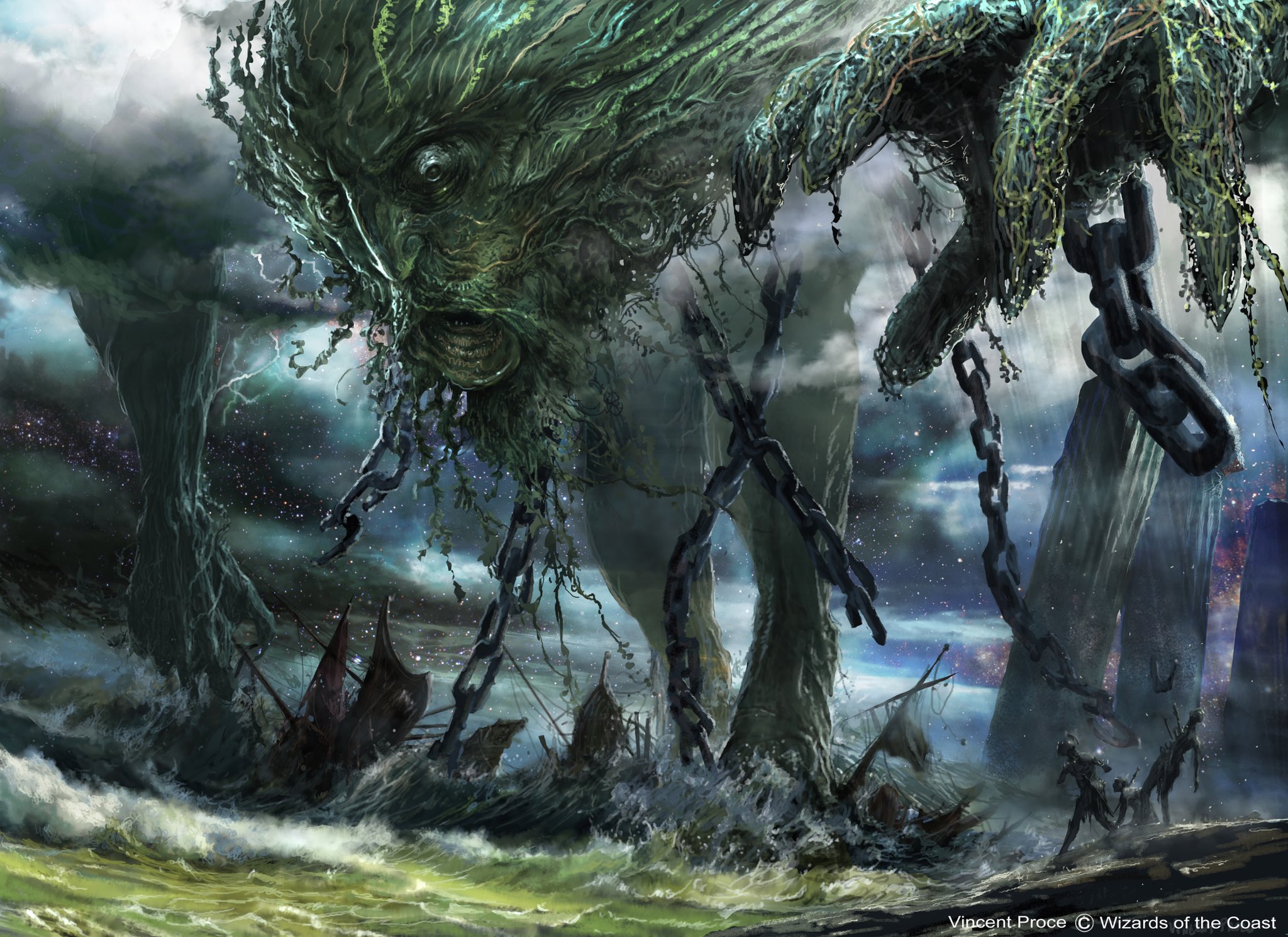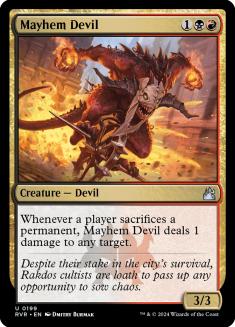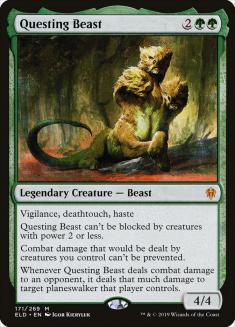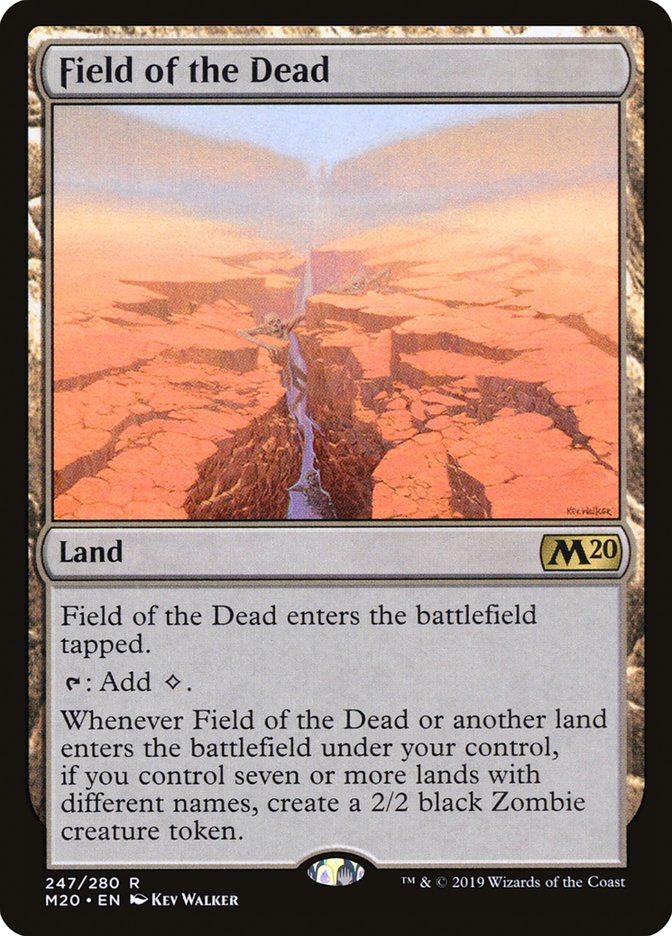Welcome to another edition of Fact or Fiction! Today, Paulo Vitor Damo da Rosa, Dom Harvey, and Sam Black are here to give their takes on five statements about various areas of Magic. Don’t forget to vote for the winner at the end!
1. Rakdos Sacrifice and Mono-Green Aggro are Tier 1 decks in Core Set 2021 Standard.
Paulo Vitor Damo da Rosa: Fiction (sorta). I believe Mono-Green Aggro is a Tier 1 deck — it’s the best aggressive deck in Core Set 2021 Standard and a good choice for any tournament if that’s the kind of deck you want to play. I don’t think it’s the best deck (I think that’s currently Sultai Ramp), but a decision to play Mono-Green Aggro should not raise any eyebrows.
Rakdos Sacrifice isn’t a bad deck, but I would not say it’s Tier 1; it’s just a fundamentally weaker deck than the top decks in the format. It’s possible that it’s the best deck to play for a particular metagame, but there’s no guarantee it’ll be well-positioned at any point.
Dom Harvey: Fiction. Rakdos Sacrifice and Mono-Green Aggro have both been quiet overperformers on the SCG Tour Online for a while now (even when Wilderness Reclamation was the only game in town). Although recent results may have you believe this Standard is another one-deck format, the numbers give more cause for optimism. When six out of eight slots in every Top 8 go to the latest ridiculous Breeding Pool deck, the ‘other’ is almost always Rakdos Sacrifice or Mono-Green Aggro and the data have them as the only other decks posting respectable win rates across time.
That said, I chose Fiction because I don’t know how long that can last. Even the strongest advocates of Mono-Green Aggro don’t argue that it’s the best deck in a vacuum — it’s a calculated choice that preys on Sultai decks distracted by the mirror. Alexander Gordon-Brown’s winning Sultai list from a few weeks ago had no maindeck sweepers and very little hard removal, choosing to focus on the matchup that matters (the mirror) with a dozen sideboard cards for anyone rude enough to attack. When most Sultai pilots adopted that philosophy, it’s no surprise that Mono-Green Aggro won the very next Championship Qualifier. If Sultai starts caring about beating aggro in Game 1 and sheds its Negates and Mystical Disputes for relevant cards, that matchup becomes a lot harder. The same goes for Rakdos Sacrifice, which is just as scared of a sudden Extinction Event as the dinosaurs were.
Mono-Green Aggro and Rakdos Sacrifice will often be good choices for a tournament — maybe even the best choice! — but they don’t have to beg for a seat at the table the way Sultai does. Sultai in some form will always be on top and no other deck can say that.
Sam Black: Fact? To be perfectly honest, my answer is “I don’t care.” I think this is a question about how we discuss formats when we have a clear one-deck metagame.
You can like or dislike Standard at the moment, but if you look at the metagame breakdown from the last two weeks on MTGTop8.com for Standard, for example, you’ll see Sultai Ramp is 44% of the field, with Temur Adventure at 9% and these two decks at 7%. In a field like that, is “Tier 1” just Sultai? I don’t think the answer to this question is meaningful. I favor resolving semantic questions like this on a conversation by conversation basis. “For this conversation, I’m using Tier 1 to mean..”
I said this is a fact because these are coherent strategies that have proven themselves, not some wacky fringe deck, and if you walk into FNM and tell someone you’re playing a Tier 2 deck, they’re probably going to roll their eyes when you show them your cool stock Rakdos “brew.”
2. Temur Reclamation is the best deck in Pioneer.
Paulo Vitor Damo da Rosa: Fiction. Post-ban Pioneer is still relatively new, and the format simply hasn’t been put to the test. Calling any deck the “best deck in Pioneer” at this point is premature, unless it’s a deck that was already the best before. I think that, until we have a big tournament in the format (or at least a reason for the general public to have more interest in the format), we can’t call a best deck unless its Leagues/ladder performance is utterly dominating, which Temur Reclamation doesn’t seem to be quite yet.
Dom Harvey: Fact. By now the burden of proof is on anyone arguing that Temur Reclamation isn’t the best deck in a format. The shell gains surprisingly little from the Pioneer card pool compared to its Standard or Historic counterparts, but it’s a testament to the strength of that core that it doesn’t need much else. Temur Reclamation is putting up excellent results on Magic Online and previous flavours of the month like Jund Sacrifice are already on the decline because they match up poorly against Growth Spiral and friends. There’s no shame in that, though — very few decks are actually good against it.
I have more faith in the competition in Pioneer to keep Temur Reclamation in check. Thoughtseize backed up by disruption or pressure is a unique problem for Temur Reclamation in Pioneer, where it doesn’t enjoy the inevitability and flexibility of Mystic Sanctuary. Teferi, Time Raveler is still legal in Pioneer and there are many strong shells for it. It’s possible that Temur Reclamation will settle as just one of several top-tier decks in Magic’s youngest format, but given its history elsewhere, I can’t fault anyone for being scared.
Sam Black: Fiction. I’ll admit that Pioneer hasn’t been my focus lately, so I’m just playing the odds here. Reclamation seems like one of several reasonable contenders in a metagame that seems remarkably balanced, especially compared to Standard. Put differently, I have enough faith in my fellow StarCityGames.com contributors who would choose other decks to think they’re all missing the power of Temur Reclamation, especially for a deck that’s so far from “under the radar.”
3. Banning Field of the Dead in Historic was the correct decision.
Paulo Vitor Damo da Rosa: Fact. I don’t fully understand why the card was suspended and then unsuspended because what changed? Whatever reasons they had for suspending it certainly remained valid, and then they reprinted Hour of Promise on top of it.
The Field of the Dead decks weren’t unbeatable, but they were format-warping. Many strategies simply weren’t valid because these decks were so popular, and many cards that would ordinarily be fine became unplayable (they were just too constricting towards both spells and creatures). “This creature is pretty good, but it’ll just get blocked by Zombies forever” was something I thought plenty of times throughout my Historic testing.
Some people said Field of the Dead was an important piece in holding Historic together, since it stopped “do-nothing control decks” from taking over the format. I would argue that the Field of the Dead decks were the “do-nothing control decks” — all they did was play lands and sweepers! Sure, they were faster at actually killing you with all the Zombies compared to something like Teferi, Hero of Dominaria and Castle Ardenvale, but every game felt the same and a lot of your cards felt completely irrelevant throughout the entire match, just like against a more normal control deck. Now that Field is gone, I expect we’ll have a bigger diversity of “do-nothing control decks,” but they will decrease in overall quantity.
Dom Harvey: Fact but why now?! Banning Field of the Dead is an obvious decision now and would have been the correct decision when they decided to suspend it instead (for reasons that were unclear then and are baffling in retrospect). The influx of new cards via Jumpstart, Amonkhet Remastered, and the Historic Anthologies could have raised the power level of the format and forced Field decks to up their game, except that Hour of Promise, one of the best cards in the original Amonkhet block, was guaranteed to arrive in the remake! This is a problem that everyone else saw coming.
If the Field decks didn’t cross some arbitrary win rate threshold or qualify for a ban by your preferred metric, they would still make for a miserable play experience. The novelty of requiring a more diverse manabase has long since worn off — I don’t often see Thornwood Falls in Constructed but I do see too many opponents buried under a stack of Field of the Dead triggers.
The presence of Field of the Dead is just one of many reasons that traditional midrange and control strategies are fighting a losing battle in Historic and removing Field won’t solve that problem but may make it less overwhelming. Other end-game plans at least force you to draw and resolve a certain card; it’s good that lands are hard to interact with, but the other half of that bargain is that lands shouldn’t be a self-contained win condition or engine piece. I don’t want Wasteland or Blood Moon in Historic, and I don’t want to want it either — let me cast my spells and force me to actually do that.
Sam Black: Fact. Sometimes, when Wizards of the Coast doesn’t ban a card that I think should be banned, I give them the benefit of doubt. They have a lot more data than I do, so I’ll try to figure out what might lead them to the decision they’ve made.
Other times, they leave Uro, Titan of Nature’s Wrath legal in every format for months.
Anyway, I don’t really like powerful cards, so I can’t remember the last time I was personally sad to see a card go. That is to say that maybe my agreeing with a decision to ban a card shouldn’t be taken very seriously, but Field of the Dead is one of those offensively bad designs where I almost feel personally insulted by the fact that it was ever printed, and I can’t really believe it was ever unsuspended in Historic.
It asserted a kind of pressure on the format that could be positive, but it wasn’t unique in doing so. The format plays the way it’s trying to push without it, so we’re much better off not having it. (By contrast, Mystic Sanctuary in Modern is similarly off the charts in power level, but it’s one of the only cards that push people toward playing longer games, so its legality can be justified by it fulfilling a unique function.)
4. Uro, Titan of Nature’s Wrath should be banned in Modern.
Paulo Vitor Damo da Rosa: Fact. Uro, Titan of Nature’s Wrath deserves the Oko, Thief of Crowns treatment — it should be banned everywhere and we should collectively do our best to pretend it never existed. It’s just too powerful and too game-warping. It’s good early and late, if you’re ahead or behind; it cannot be countered, discarded, or killed; and it doesn’t really have diminishing returns despite being legendary.
I do like some things about Uro (for example, I think allowing people to play higher land counts is a good thing, and Uro does that), but my biggest issue is that, by itself, it sort of invalidates trying to deal damage. You can build your deck with absolutely zero cards against aggro, throw a couple of Uros in there, and then you’ll be at least 40% versus it (we saw this in Standard where Reclamation decks would maindeck ten counterspells, have actual zero pieces of removal, and still beat Mono-Red). I think that, if you want to beat aggro decks, you should have to make sacrifices elsewhere, rather than have that effect attached to your ramp/end-game card, and the only way to accomplish that is to remove Uro from the equation.
Dom Harvey: Fiction. At the risk of sounding like a broken record — not least by giving that same introduction again for this very topic — the problem is Mystic Sanctuary. I can’t be certain that’s the only problem but we haven’t seen how oppressive Uro is in Modern when Misty Rainforest isn’t your best land and your best spell at the same time. If Uro is a strong incentive to play a base-Simic control deck that promotes a different style of gameplay from Azorius Stoneblade or pure control, that sounds fine to me. The fact that Uro works so well with Mystic Sanctuary makes that pair the best thing to do in blue decks (and Modern in general). Give me a few months without Mystic Sanctuary and maybe I’ll have to change my tune; for now, I know where to direct my frustration.
Sam Black: Fact. #UnprintUro
I had a lot of fun playing Uro in Modern when everyone else was playing two or fewer copies and I was playing four, but now that the jig is up I’ve had no interest in touching the format. Uro was simply not printed on the same power band as other cards, should never have even made it as far as the internal playtesting tables, and should be banned from every format.
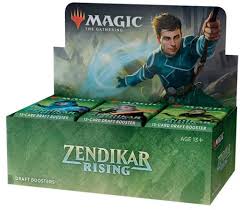
5. You prefer to visit previous Magic planes (Zendikar) than visit new ones (Eldraine).
Paulo Vitor Damo da Rosa: Fiction. There’s certainly merit to returning to a plane, especially if the plane was super-cool and was only used for one set rather than one entire block — you get to see what happened to the characters you liked and the continuation to the story — but most of the planes I’ve liked enough to return to have already been done multiple times (Ravnica, Innistrad, Dominaria…).
Ultimately, the list of potentially interesting planes is almost infinite. When I followed the Great Designer Search, for example, each contender in the Top 8 had to come up with a plane and most of them seemed like they had a lot of potential and were worlds that I’d rather go to than revisiting a plane I didn’t particularly love. Eldraine lost some of its appeal based on the power level of its flagship cards, but as a world I absolutely loved it and I’m really glad we got to experience it rather than, for example, a return to Zendikar. The fantasy/mythology world is so vast and there are so many planes out there that I think it’d be a waste to just return to the same planes over and over rather than exploring new options.
Dom Harvey: Fiction. As a pre-teen who was just getting into Magic, the Ravnica preview season gave me a love for the game that burns bright fifteen years later. As a teenager, and by now a deeply enfranchised player, I roared with excitement at the Return to Ravnica announcement as loudly as the crowd at PAX did. As a jaded twenty-something who considered Magic a big part of his life, the Guilds of Ravnica previews… did nothing for me? The desire to revisit popular worlds and storylines makes perfect sense but I worry that this lack of excitement isn’t unique to me.
This example doesn’t inspire confidence either. If Zendikar helped to reinvigorate interest in Magic (or just happened to come along at the right time, depending on who you ask), Battle for Zendikar flopped harder than any set in recent memory at the time. Instead of being happy to revisit a popular plane, fans were angry that its potential was wasted on a such a poor sequel. If you revisit a world to build on previous success and use that stable foundation to take bold risks, that’s one thing; if you do it because it’s safe and predictable, few people leave happy.
Sam Black: Fiction. I don’t have a preference or it depends. I like sets designed in sweet worlds. Variety is good, so I’d probably prefer a new world that is exactly as sweet as Innistrad to another Innistrad set, but I’d prefer another Innistrad set to something appreciably less sweet. I like the current structure where we get both new and old worlds, because I think it’s nice to know that they might revisit something you really liked, but it’s probably cooler overall to see new things they can do with the game.

